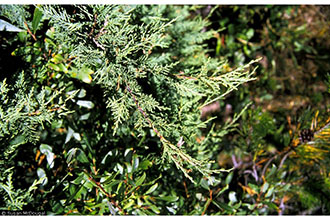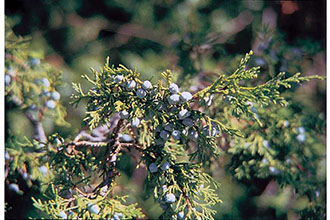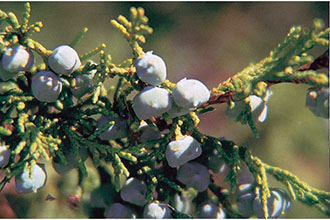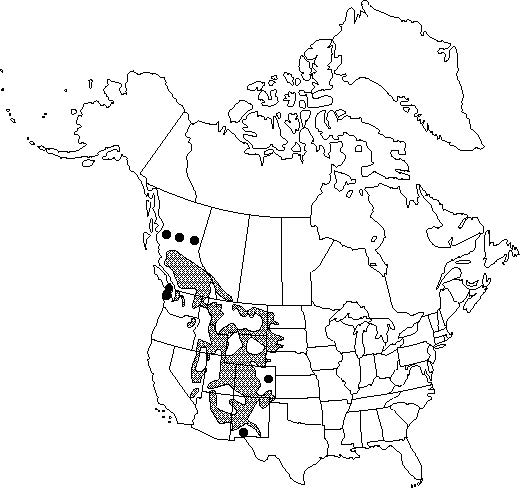Taxonomy: Kingdom - Plantae (plants). Subkingdom - Tracheobionta (vascular plants). Superdivision - Spermatophyta (seed plants). Division - Coniferophyta (conifers). Class - Pinopsida. Order - Pinales. Family - Cupressaceae (cypress). Genus - Juniperus L. Species - Juniperus scopulorum Sarg.
Ecology: Of 11 junipers native to the United States normally reaching tree size, Rocky Mountain juniper is the most widely distributed in western North America. Rocky Mountain juniper is usually found in long-term seral or near-climax vegetation. It is relatively shade-tolerant during the seedling and sapling stages, but it later becomes more intolerant and is unable to endure as much shade as eastern redcedar-its eastern counterpart. Rocky Mountain juniper requires top light for height growth and crown development, and trunk branches die out when it develops in overly dense, pure stands or under deep shade of other tree species. In the northern Rocky Mountains, it is considered less tolerant of shade than ponderosa pine, limber pine, or lodgepole pine but is reported to endure considerable shade from broadleaf trees in protected canyons and sheltered sites on the Pacific coast. Overall, it is most accurately classed as a very shade-intolerant species. It is often found as a climax species in juniper, pinyon-juniper, and pinyon associations in the Rocky Mountain region, and tends toward dominance at higher elevations. It is a minor component of climax or a seral species in Gambel oak and ponderosa pine associations. The species may also be climax with Douglas-fir, or it may occur as a "pioneer" tree species in Douglas-fir succession. In pinyon-juniper habitats, Rocky Mountain juniper is often the first to return after a disturbance, and it may invade sagebrush (Artemisia spp.) stands. In both habitats pinyon may follow and eventually replace it.



